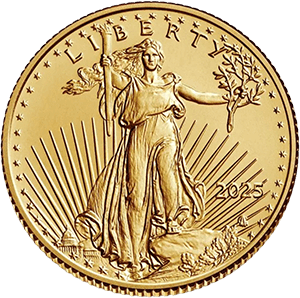
In America, we don’t just celebrate freedom on July 4th—we carry it in our pockets, display it in our collections, and preserve it in precious metal. From the earliest days of the republic, coins have done more than represent economic value. They’ve been miniature monuments to our ideals: liberty, unity, strength, and independence.
When Congress passed the Coinage Act of 1792, it laid more than the foundation for the U.S. Mint—it created the monetary identity of a new nation. This landmark legislation established the dollar as the standard unit of money and introduced a decimal-based system, an innovative move at the time. It also called for the production of gold, silver, and copper coins—anchoring the economy in tangible value. The Mint was born in Philadelphia, then the capital of the United States, and it began striking coins that would help define American commerce and sovereignty.
The law specified designs for the coins, requiring that one side include an image "emblematic of liberty"—a choice that set the tone for centuries of patriotic symbolism. Early coins featured Lady Liberty in various forms: flowing hair, capped, seated, or standing, she was a representation of the freedom the new nation had fought so hard to secure. Unlike monarchies that printed the faces of kings and queens on their currency, the United States chose a different path. Liberty was not a ruler, but a guiding ideal.
In 1794, the Mint released the first Flowing Hair silver dollars, made of 90% silver. These coins were both practical and political: they helped unify the economy and sent a message to the world that America’s money was real—literally backed by the nation's natural resources. Over time, designs evolved to reflect not only liberty but the strength and unity of the union, often including eagles, shields, olive branches, and stars as symbolic elements.
The 19th century saw the expansion of coinage designs that told the story of a growing nation. The Seated Liberty coinage, introduced in 1836, depicted Liberty sitting atop a rock, holding a shield in one hand and a liberty cap on a pole in the other. It was a time of westward expansion, industrialization, and conflict, and this imagery communicated the idea of vigilance, protection, and national purpose. This coin series endured through the Civil War—a testament to its power as a symbol of American perseverance.
As technology advanced and engraving techniques became more refined, coins began to feature even more elaborate designs. The Morgan Silver Dollar, minted from 1878 to 1904 (and again briefly in 1921), became one of the most iconic American coins of all time. Its bold image of Liberty, modeled after a real woman (Anna Willess Williams), signified a nation that still revered its foundational ideals. The reverse showcased a powerful eagle with outstretched wings—an emblem of national pride.
In the 20th century, coins like the Walking Liberty Half Dollar (1916–1947), the Standing Liberty Quarter, and the Buffalo Nickel continued to embody patriotic themes. These weren’t just pieces of change—they were art, history, and ideology all pressed into metal.
The Power of Precious Metals
Early American coins weren’t just symbolic—they held intrinsic value. Unlike today’s fiat currency, which is only as strong as the government that issues it, gold and silver coins held value in their weight and purity. A gold eagle or a silver dollar wasn’t a promise—it was wealth. This was critical in a new nation that needed credibility, especially in global trade.
This tradition of hard money fostered a cultural reverence for precious metals that continues today. Collectors and investors understand that coins aren’t just financial tools—they’re repositories of national identity.
Why Collectors Still Care
Today, these coins are prized not just for their metallic content, but for what they represent. Holding a Seated Liberty dollar or a Saint-Gaudens Double Eagle is like holding a chapter of the American story. These coins have survived economic crashes, wars, and political upheaval. They were present during the building of railroads, the signing of treaties, and the turning of centuries.
Coin collectors—also known as numismatists—often view their collections as patriotic acts. By preserving these coins, they’re preserving American history. And for investors, the same applies: precious metal coins are a hedge against modern financial instability, but they’re also a link to a time when money had meaning you could hold.
Whether passed down through generations or purchased as a first investment, American coins offer something far more valuable than their face value. They offer a tangible connection to the ideals of liberty, independence, and resilience.








